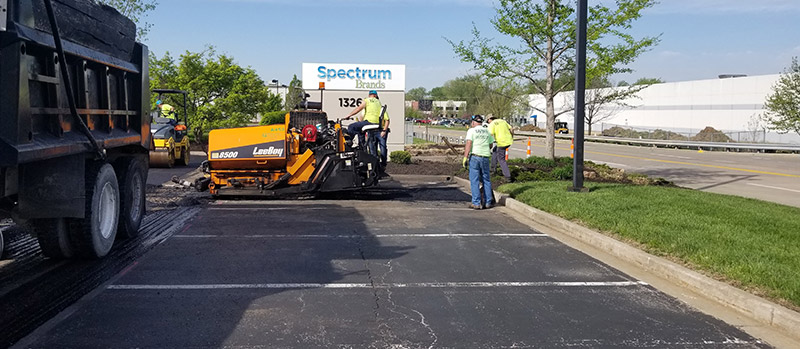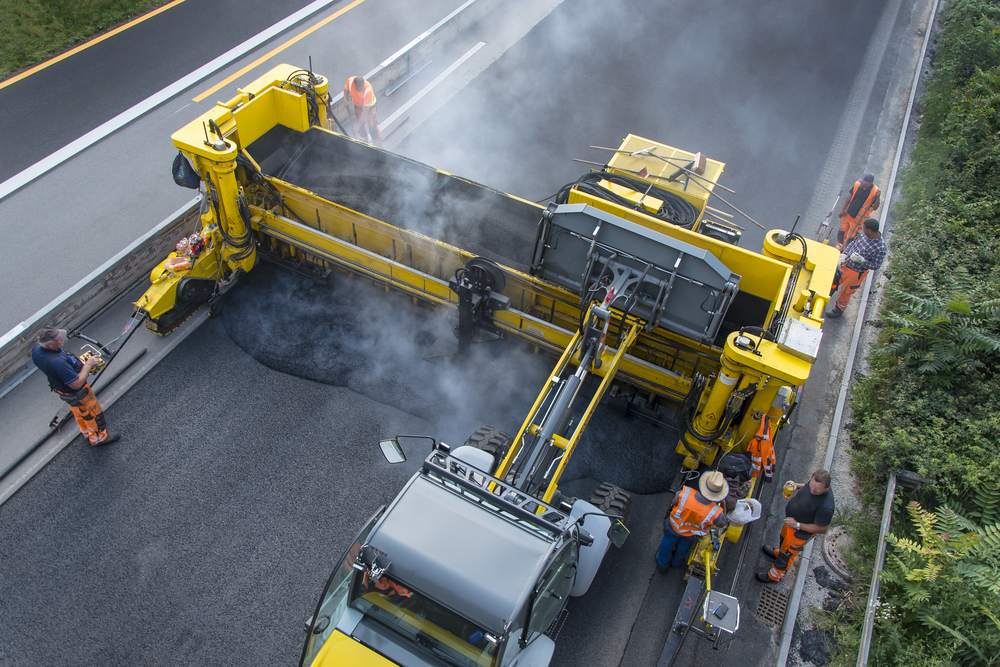The Ultimate Guide To A1 Professional Asphalt & Sealing Llc
The Ultimate Guide To A1 Professional Asphalt & Sealing Llc
Blog Article
Getting My A1 Professional Asphalt & Sealing Llc To Work
Table of ContentsExamine This Report on A1 Professional Asphalt & Sealing LlcIndicators on A1 Professional Asphalt & Sealing Llc You Need To KnowThe Definitive Guide for A1 Professional Asphalt & Sealing LlcThe Greatest Guide To A1 Professional Asphalt & Sealing LlcExcitement About A1 Professional Asphalt & Sealing Llc

The oil in a vehicle engine is not simply oil. It consists of a variety of ingredients to enhance the lorry's performance. These consist of polymers, viscosity modifiers, warmth stabilizers, extra lubricants, and wear ingredients. The REOB has all the ingredients that were in the waste oil in addition to the wear metals from the engine (generally iron and copper).
However, by making numerous blends using various REOB examples and various asphalt binders, the variants mostly can be balanced out. A number of States provided samples of known REOB composition to TFHRC researchers, who evaluated the samples to contrast the portion of included (understood) REOB to the discovered (checked) quantity. The evaluations revealed an equivalent percent of included and located REOB.
The Best Strategy To Use For A1 Professional Asphalt & Sealing Llc
They received a frustrating feedback. The TFHRC researchers assessed 1,532 examples from 40 States, one Canadian province, and two Government Lands Highway divisions. They assessed each example twiceamounting to even more than 3,000 evaluations. None of those States recognized that the asphalt they were purchasing contained REOB. One State urged its samples had no REOB.
Of the 1,532 samples tested, 12 percent had REOB, and some had significantly high degrees of it at 1020 percent. The highest possible degree was 34 percent in a sample from Texas, which TxDOT had made use of in a patching substance. This screening additionally exposed the presence of phosphoric acid in 11 percent of the examples, and 2 percent included ground tire rubber.
2 years ago at TRB's yearly meeting, the Federal scientists held an REOB workshop and presented the searchings for of their lab assessments to a standing room-only group. Some agencies do not especially prohibit REOB, they do enforce physical tests that avert its useeffectively a ban. Others do not prohibit it by specification, yet have contracts with asphalt distributors to stay clear of the use of REOB
A Biased View of A1 Professional Asphalt & Sealing Llc
A handful do permit REOB, some within certain limitations. Ohio and Texas restriction degrees to less than 5 percent of the asphalt. To establish a reliable test technique that all States can utilize, the TFHRC researchers set up a round-robin examination plan. The participants are 11 State highway companies (Illinois, Massachusetts, Minnesota, Mississippi, Montana, North Carolina, Oklahoma, South Carolina, Texas, Vermont, and Wyoming), 2 independent screening labs, the Ministry of Transport in Ontario, Queen's University in Ontario, and an Ontario paving professional.
In overall, the researchers prepared and delivered 720 blends. The individuals are testing the samples independently using the guidelines supplied by the TFHRC scientists. The round-robin testing is nearly finished, and TFHRC is in the process of collecting the outcomes. The outcome will be a proposed AASHTO test approach that any kind of State can take on and utilize (a-1 asphalt).
The pavement with REOB, which is situated 0.6 mile (1 kilometer) from the pavement without REOB, has the same subgrade, web traffic thickness, and climate. However, the section of Highway655 with 5 to 10 percent REOB revealed considerable splitting. In this instance, the existence of REOB was the identified root cause of splitting at a low temperatures.
An area of examination sidewalk in Minnesota (MN1-4) found to have REOB likewise split prematurely. The sidewalk performed well for the very first 3 to 4 years, but then started to fracture.
The Basic Principles Of A1 Professional Asphalt & Sealing Llc
The tests were not substantial, however they revealed that at degrees of 6 percent or more, the tensile stamina of the asphalt dropped considerably. At a level of 3.5 percent REOB, the variant in the physical examination techniques was greater than the effect of REOB. As a matter of fact, it was challenging for researchers to assess whether REOB existed.

One binder parameter taken into consideration is the distinction in between the low temperature important spec temperature for stiffness (S) in the bending beam rheometer and the flexing light beam rheometer creep incline (m-value) noted special info as Tcritical. TC = TC (S) TC (m-value). Evaluation of this parameter is still continuous. Two independent study groups, one from AASHTO and the various other from the Asphalt Institute, ended that even more study is needed on using REOB in asphalt.
Previously, all asphalt screening measured design homes such as stiffness. These examinations do disappoint what materials had actually been added to the asphalt. One sample gotten during the TFHRC research study had a very strange evaluation. The example had the adhering to test outcomes: Superpave PG 64-28 with a heat quality of 67.3 Tcritical on the bending light beam rheometer was 6.7 degrees Celsius.

The 5-Minute Rule for A1 Professional Asphalt & Sealing Llc
These results demonstrate there are weak points in the standard design screening procedures that may be manipulated. The producer might have a financial advantage and the product passes all the standardized tests, but the item might not be advantageous to ensuring long-term efficiency. To resolve this problem and the expansion of new asphalt additives and extenders, TFHRC is beginning a research study program to utilize handheld spectroscopic tools, x-ray fluorescence spectroscopy, and Fourier change infrared spectroscopy to allow analyses to be done in the area instead than having to take examples back to the laboratory.
Report this page